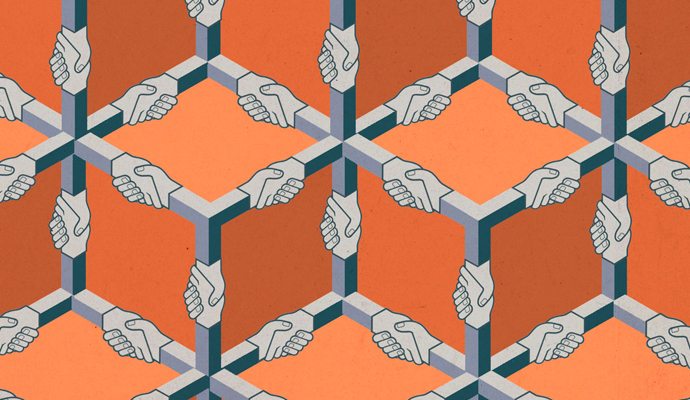Thanks to the dreamy marriage of the Internet of Things (IoT) and artificial intelligence, we can confidently look forward to having smart, digital assistant in near future. From personalizing home automation to scheduling and performing manufacturing and industrial tasks, the IoT is not only paving a smooth road to the Fourth Industrial Revolution, but is also making the journey a lot quicker.
Amazon’s Echo and Tesla’s self-driving cars are glaring examples of the IoT’s arrival. In an IoT network, all the devices are connected to each other via cloud, and the devices constantly share data to smoothy complete co-dependent tasks, optimize solution delivery, counter security threats. No only this, but the devices continue to learn more about the person they are serving.
Unfortunately, the IoT is susceptible to security breaches and exploits, which places it not far away from other data-sharing networks. Just like any other computer, smartphone, laptop or tablet, the IoT-powered devices need to be consistently protected since they are connected to the Internet 24/7, and consequently constantly facing the threat of being attacked.
What can a hacker achieve by targeting an IoT-powered device, you might ask? Lets begin with a IoT security solution at your home that works on the biometric principle. Let’s not forget that the biometric data of every human being is unique and can be easily manipulated in various ways to create a user profile. Fingerprints can be digitized, voice and facial features can be mapped using different algorithms, patterns and rhythms (talking/texting/typing/walking) can be identified using advanced algorithms. We sincerely hope you get where we are going with this.
This is the exact point where blockchain can come to the rescue of the IoT. Blockchain has this inherent ability to resist any denial of service attacks on a centralized system. The fact that the process of authenticating data is composed of various block chain nodes, each hosted by one of many different parties, makes it practically impossible to take down the system by getting the authentication data just from a single party. Even if the security of one user is compromised, the integrity of the rest of the system remains intact.
Centralized data sharing holds a critical position in the IoT, which makes privacy and security a reasonable concern. Blockchain provides an alternative to traditional security approaches, where limitations of infrastructure and lack of common framework hinder the progress.
Furthermore, the blockchain technology can be introduced to promote Business Process Interoperability (BPI) without the need for a complex infrastructure. BPI lets various companies share authentication information with each other. For example, an insurance company can authenticate a user with a hospital using a single shared identity data. Sadly, the lack of shared identity stacks prevent companies from identifying and authenticating users with other businesses. The blockchain technology will enable different companies to keep a shared identity stack for user identity authentication through biometric data.
Blockchain can also support an interoperable ledger for identity among multiple entities.In the case of cryptography, the blockchain technology will set up the protocols of connectivity among devices through biometric data validation. The network running nodes will receive biometric data associated with respective devices and their time stamps. To authenticate a user, the network just has to confirm whether a particular device and identity had been connected to each other within a recent time frame. Specialized identity stack will help prevent the disposal of personal data for authentication purposes by using the encrypted biometric data instead.
What if there is no internet connection? Will I be locked out of my car or my home? Good question. Blockchain has a plan for that too. In the case of offline devices, blockchain technology and smart contracts can help establish a link by providing the missing blockchain blocks. A device will be required to download an entire blockchain, which might be troublesome for a small IoT device, but this will help devices share data in real time.
For instance, if you use a smartphone to unlock your hotel room door, both the door lock system and the smartphone will have a database on the blockchain. A smart contract is created on the blockchain which unlocks the room door for a particular smartphone. The front desk provides your smartphone with a Blockchain which already has the executed smart contract.
You then go to your room; your smartphone uploads the missing blocks to lock blockchain which completes the smart contract and unlocks the room. It is also applicable in the case of rental cars, lockers, or any device with limited or no internet access.
For hospitals, a blockchain solution powered by biometrics can help identify unresponsive patients with no ID by using information collected from other companies. The Industrial Internet of Things (IIoT) can contribute greatly to this cause since production, supply chain, and sales are co-dependent processes that require constant human coordination for effective output. With the assistance of IIoT, robots working on factory floors could be easily integrated with supply chain, sales, and deliveries. It could give a situational consciousness to the facility as a whole.
Different companies are emerging in the services market with tailor made solutions for problems faced by the IoT. Some companies are focusing on public solutions, while some prefer private enterprises. HYPR is a promising startup that recently introduced a biometric data-based blockchain system for communication and encryption for the IoT. The solution addresses the needs of banks, insurance companies, and the health care sector where data security is highly regulated. Presently, no regulatory standard framework applies to the Blockchain technology. Another company, UniquID, is using innovative blockchain and smart contracts technology to provide offline connectivity. They are also working on a novel approach to connectivity (an alternative to SIM cards) using decentralized certificate authorities.
Right now, blockchain technology seems to have all the answers to the identity crisis in Internet of Things (IoT).


















